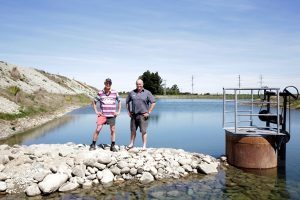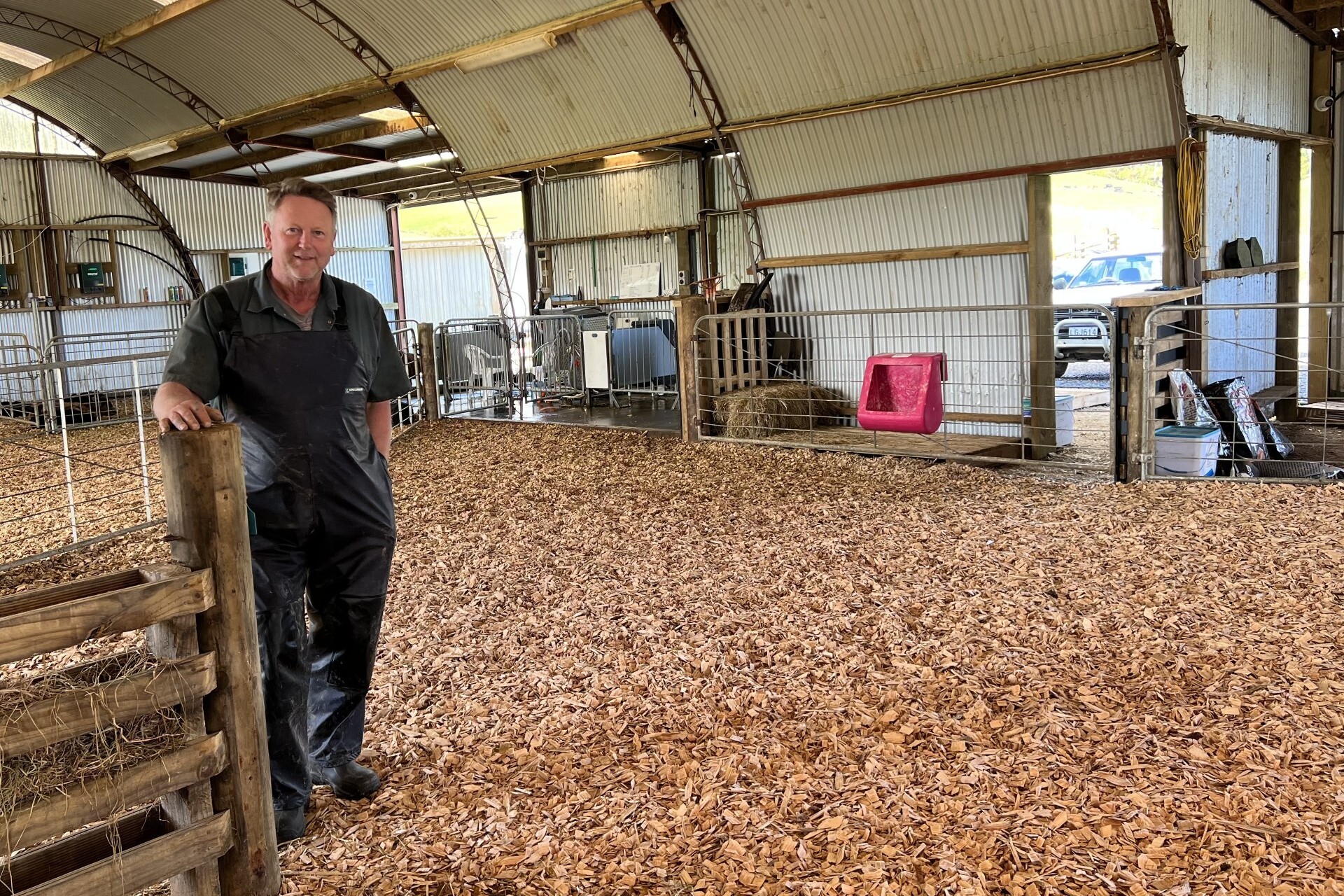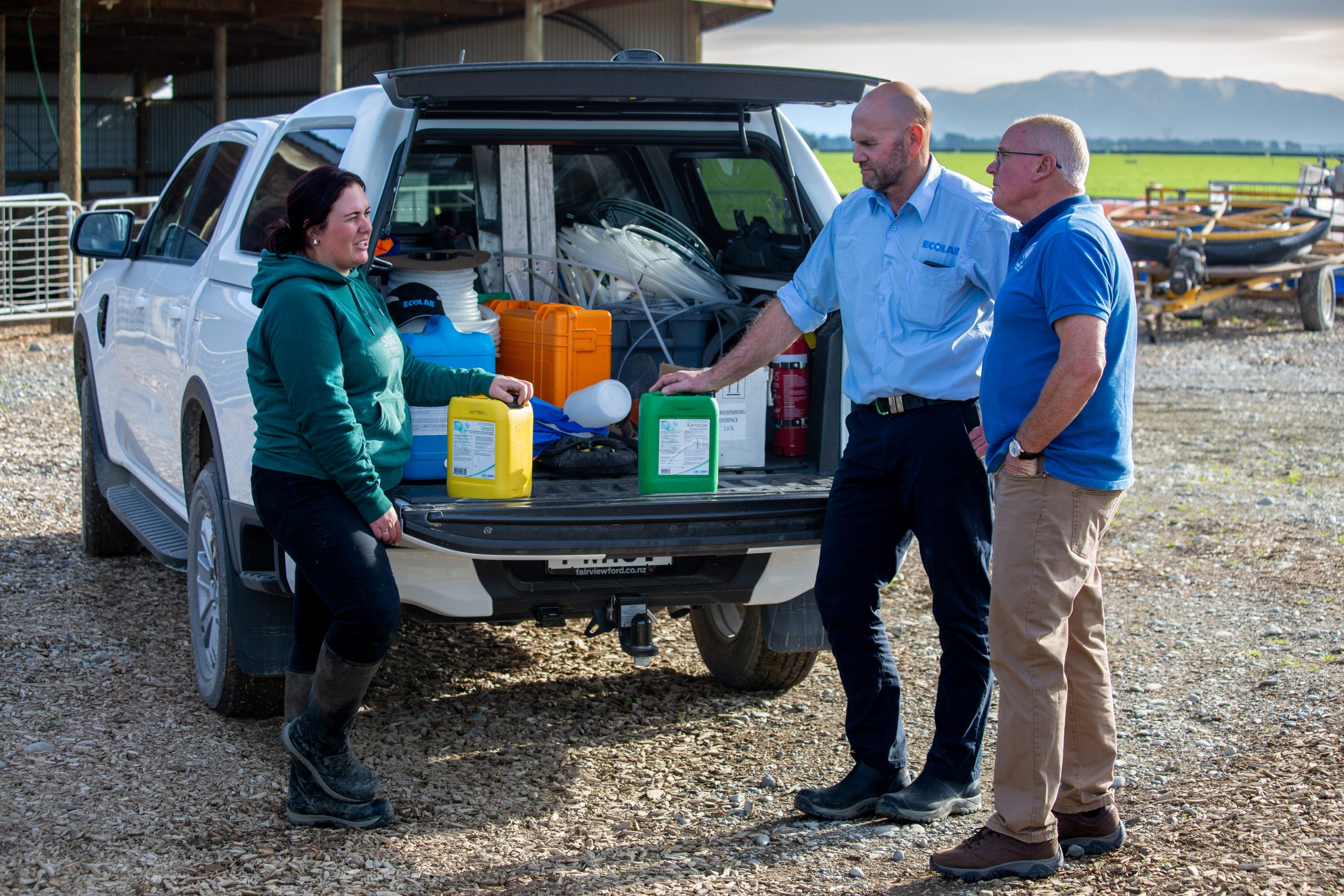A seemingly simple, but hydrologically complex process is offering a means to reducing Canterbury nitrate levels and restoring groundwater levels. Anne Lee reports.
It looks like a smaller version of an onfarm storage pond – fenced off and sitting on a corner site just west of Tinwald at Laghmoor.
But the innocuous pond has already proven a valuable tool in the search for ways to help solve what’s become one of the biggest, if not the biggest challenge to dairy farming’s future on the Canterbury plains – nitrate levels in groundwater.
Managed aquifer recharge (MAR) is a seemingly simple, but hydrologically complex process that at its most basic takes clean water and adds it to the groundwater system.
American-born hydrologist Bob Bower explains that the clean water can be transferred into the underground system by building what are essentially leaky ponds, injecting it into bores or allowing it to infiltrate down through constructed wetlands.
It’s a process used worldwide to tackle a range of problems – often to replenish groundwater flows or reserves depleted by over-allocation or because the natural recharge processes are prevented by factors such as urban sprawl.
In the case of the MAR project, now in its third year in Canterbury, it’s been both a water quality and water quantity solution that’s been sought.
Groundwater at the site was sitting about 27m below ground level and is now about 10m below ground level.
The project stemmed from the fact that bore monitoring in the Hinds/Hekeo area, just south of Ashburton, were showing ever-increasing levels of nitrate to the extent some are significantly above World Health Organisation drinking water standard levels.
Groundwater levels were also falling.
The problems extended to the east of state highway one, too, but surface water – in streams and drains – was also facing problems with water levels dropping, causing habitat degradation and a decline in fish and eel numbers.
Somewhat ironically, as farming has intensified, irrigation systems and management have improved so that groundwater recharge has declined.
Flood or borderdyke irrigation and high-application rate spray irrigation has been replaced by low-rate systems, irrigation scheduling using soil moisture monitoring and a shift to reticulated stock water supplies have combined to reduce recharge.
Hinds area deer, sheep and arable farmer Peter Lowe is chairman of the MAR governance group.
He says the MAR pilot site at Laghmoor had three aims – to raise ground water levels east of the site, boost drain and stream flows to improve in-stream habitats and to reduce nitrate levels in the groundwater.
It’s ticked two of those boxes, dramatically reducing groundwater nitrates and lifting groundwater levels and as the project goes into its third year it’s expected the increased water flows will reach the lowland drains and streams helping improve their habit health.
The original pilot site is on just 0.9 hectares owned by the Ashburton District Council.
Bob says the Laghmoor site is constructed so that the clean water, carried by the MHV water irrigation scheme – part of the Rangitata Diversion Race (RDR) scheme, flows into a small forebay that acts as a settling pond for any sediments.
It then flows into the larger “leaky” pond or main basin constructed of gravels over gravels.
Over its first two years that basin received about 17,000 Olympic-sized swimming pools worth of water or about 4.3 million cubic metres.

In some nearby bores the nitrate levels have dropped from 17g/cu m to 7g/cu m with concentrations at the adjacent bore sites generally dropping from 15-17g/cu m to where they’re hovering around 2-3g/cu m.
Groundwater at the site was sitting about 27m below ground level and is now about 10m below ground level.
With results like that the words silver bullet are likely already forming but not so say the experts and the farmers (now also arguably experts) involved in the project.
“This is only going to be part of the solution. The reductions farmers make at a paddock level by how they’re farming must happen too if we’re going to achieve the nutrient reductions the community has said must happen,” Peter says.
There’s just not enough water, sites or money to completely solve the nitrate issue with MAR.
MAR governance committee member, dairy farmer and MHV director Mark Saunders says farmers will still have to find ways to slash 36% off their nitrate leaching losses onfarm by 2030 even with MAR.
Without MAR the reductions and changes to farm systems would be greater.
“The uninformed visitors we get to the site start out thinking this is a get-out-of-jail-free card for farming and it’s not.
“It’s just one of the tools in the tool box. We’re never going to be able to get enough water in the ground to fix all the nutrient problems,” he says.
While not a dairy farmer, he sees the benefits dairying has brought to the community.
“The shops in Ashburton are full, the schools are full because guys like Mark and his family have come to the area.
“I’m old enough to have farmed through the late 1980s when people walked off their farms – I don’t want to see that happen again.”
Monitoring of bores is showing the flume of water with lower nitrate concentrations is extending eastward and out from the pilot site at a steady rate and, spurred on by those results, another 16 smaller test sites have been installed to identify the best locations for larger installations and help draw up the plan for the future.
They’ve been operating since the end of last year and are also showing good results.
A business case is in the process of being established to scale up the project and while 173 sites have been identified Bob says it’s likely about 100 will be needed to add the required 125 million m3 of water to the groundwater in the area to achieve the zone committee’s goals.
Still to be resolved is where all that water will come from.
While it will mostly come from the Rangitata River via the RDR fed schemes the water itself is largely allocated to irrigators and for power generation.
The water used in the pilot MAR site and test sites is water allocated to the Ashburton District Council for stock water that’s no longer used.
Both Mark and Peter agree a lot of discussions are taking place and still to be had.
While the water has been hard fought for there is a sense of willingness amongst parties to come up with a solution for the MAR project’s future.
It is likely to come at a financial cost on top of the cost to construct the recharge sites.
A community trust will be formed to take over from the governance group and will include stakeholders such as farmers, environmental groups, Iwi and community members including experienced governors such as Sir Graeme Harrison.
While other water infrastructure solutions such as large-scale storage have taken years and been bogged down in lengthy battles between interest groups Peter and Mark are confident the expansion of MAR in the area will happen at pace.
“In three years we’ve taken this from gaining understanding of the concept, proving it and now working on taking it wider,” Peter says.
There’s a sense that all parties are now getting behind it as a necessary tool and with in-stream and habitat enhancement also addressed by MAR sites such as the one built at the upper reaches of the Hinds River, the benefits allow MAR to speak for itself.





